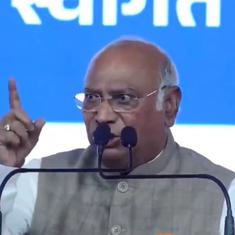Located close to the railway station in the northern suburb of Malad in Mumbai, a plaque mentioning the street name seems as insignificant as most others.
But Hindustani music lovers will be happy to learn that this street is named after Pannalal Ghosh, the pathbreaking musician who gave the bansuri, or the bamboo flute, solo status in the Hindustani concert arena at par with the position enjoyed by instruments like the sitar and the sarod.
Unfortunately, like most other cases, no biographical information has been provided at the site about the person in whose memory the street has been named.
But given the level of indifference generally shown towards the arts by those in power, I suppose one should be content with just the fact that a musician of Pannalal Ghosh’s eminence has been recognised by way of naming a street after him in the suburb that was home to him for several years.
Ghosh was originally from Barisal, in present-day Bangladesh, before he moved to Kolkata and then to Mumbai.
Born in a musically-inclined family, he trained under noteworthy harmonium player Khushi Mohammad and then under Girija Shankar Chakravarti before he became a disciple of Allauddin Khan, the renowned founder of the Maihar gharana.
Remembering Pandit #PannalalGhosh, pioneer of Hindustani Classical Flute music on his birth anniversary
— Dayanand Kamble (@dayakamPR) July 23, 2020
He was a disciple of #BabaAllauddinKhan of #Maihar gharana, credited with popularizing flute as a concert instrument, invented "Madhyam Hole" at the bottom of flute.
Tributes pic.twitter.com/vUbiGd4BZi
He made several modifications to the bansuri in order to be able to bring out the essence of Hindustani music by reproducing all embellishments that were integral to it. His experiments in changing the structure of the instrument and also introducing a base flute allowed him to present various forms of Hindustani music.
Thus, he laid the ground for future bansuri players to present solo recitals and to further experiment with the instrument.
As a composer, Ghosh had composed raags, such as Deepavali and Nupurdhwani. He also worked as music director for Hindi cinema and was the composer and director of the Vadya Vrinda at the Delhi Akashvani radio station.
Let us listen to a few of his renditions. To begin, here is a presentation of Mia ki Todi, a raag prescribed for the morning. The vilambit, or slow composition, is set to the fourteen-matra Jhumra and the drut, or fast-paced one, to follow is set to the 16-matra Teentaal.
On the second track, the maestro plays two compositions in the raag Des/Desh, the first set to vilambit Ektaal, a cycle of 12 matras, followed by a drut composition in Teentaal. He is accompanied on the tabla by noted tabla player Chatur Lal.
The third track has a short recital of Chandramauli, a raag composed by Pannalal Ghosh. He plays a madhya laya or medium-tempo composition in the ten-matra Jhaptaal. The second composition in drut Teentaal.
We end with a thumri in the raag Bhairavi. It is set to the 16-matra Jat taal.
One of India’s leading tabla players, Aneesh Pradhan is a widely recognised performer, teacher, composer and scholar of Hindustani music. Visit his website here.










